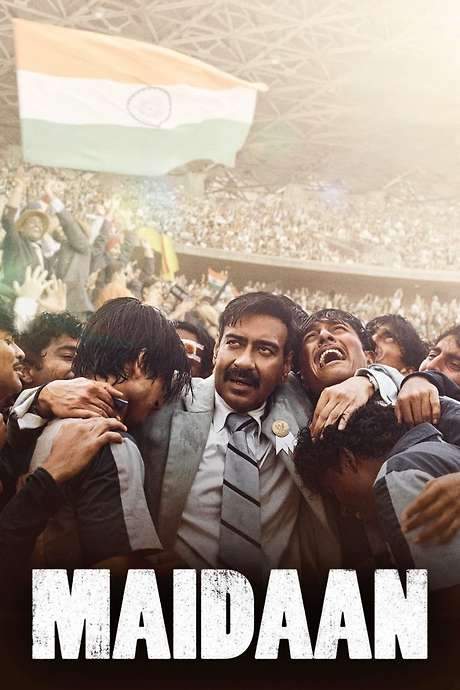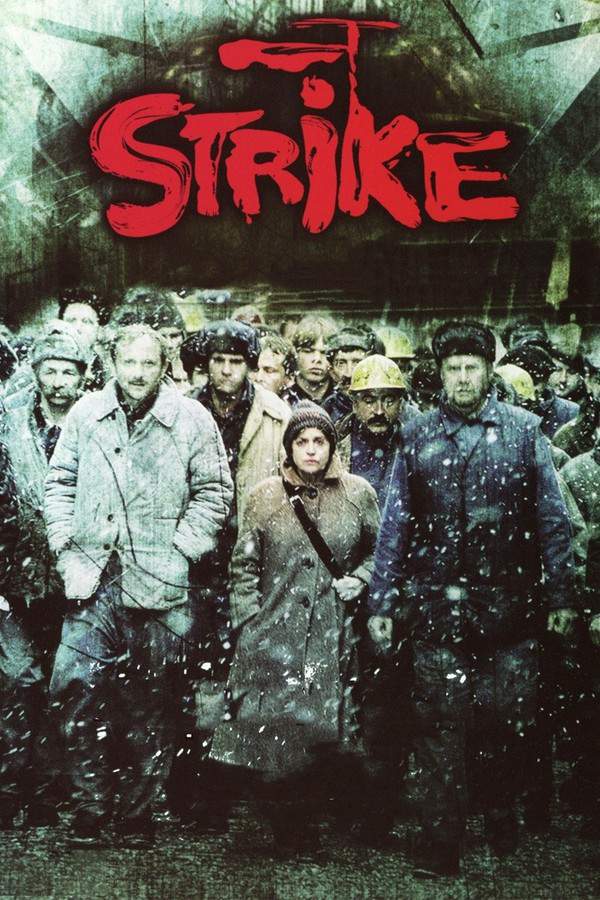
Maidaan
One Man. One Belief. One Spirit. One Nation. Inspired by Syed Abdul Rahim, the celebrated coach and manager of the Indian national football team, regarded as the architect of Indian football, the film portrays his visionary leadership during the sport’s golden era from 1952 to 1962, highlighting his relentless dedication, the unity he fostered, and the historic rise of the team.
Warning: spoilers below!
Haven’t seen Maidaan yet? This summary contains major spoilers. Bookmark the page, watch the movie, and come back for the full breakdown. If you're ready, scroll on and relive the story!
Maidaan (2024) – Full Plot Summary & Ending Explained
Read the complete plot breakdown of Maidaan (2024), including all key story events, major twists, and the ending explained in detail. Discover what really happened—and what it all means.
In Helsinki during the 1952 Summer Olympics, the Indian national football team suffers a crushing 10-1 defeat to Yugoslavia, casting a long shadow over the federation’s confidence in its leadership. The All India Football Federation places the blame squarely on the head coach Syed Abdul Rahim [Ajay Devgn], and Rahim asks for permission to rebuild the squad with fresh, capable players. Though many federation members resist, President Anjan [Baharul Islam] ultimately backs his plan, allowing Rahim to go out across the country to scout for new talent. Rahim envisions a more cohesive unit drawn from different corners of India, assembling a new team that includes Tulsidas Balaram [Sushant Waydande] from Secunderabad, Peter Thangaraj [Tejas Ravishankar] from Hyderabad, and Chuni Goswami [Amartya Ray] along with P. K. Banerjee [Chaitanya Sharma] and other promising players from Calcutta and beyond. This reshaping stirs resentment in Roy Choudhary [Gajraj Rao], a Calcutta-based journalist who resents the shift away from his region and resists Rahim’s changes.
By the time the 1956 Summer Olympics roll around in Melbourne, the Indian squad has grown tighter and more disciplined. An incident where an Australian player disrespects Neville D’Souza [Vishnu G. Varrier] becomes a catalyst for India, and Neville rises to the occasion by scoring a hat-trick as India dominates the match, winning 7-1 and signaling a new confidence for Rahim’s reworked team. The performance helps India reach a respectable fourth place at these Games, but internal pressures within the federation persist. Roy Choudhary and Subhankar Sengupta (the latter portrayed by Rudranil Ghosh) maneuver behind the scenes as Rahim fights to maintain his authority, underscoring the political dimensions that accompany the on-field battles. Rahim presses on, convinced that a gold medal at the Asian Games could vindicate his approach and secure the future of Indian football under his guidance.
The next major turning point arrives at the 1960 Summer Olympics, where India faces a strong France side and plays to a hard-fought 1-1 draw. The federation uses this result to question Rahim’s methods once again, and he is eventually relieved of coaching duties for underperformance. Alongside the professional setback, Rahim learns he has developed lung cancer, a consequence of years of heavy smoking, and the prognosis casts a long shadow over his remaining time. The news could have broken his resolve, but his wife Saira [Priyamani] stands by him, urging him not to give up and to keep pursuing his dream of leading India to a gold medal.
Determined to prove himself one last time, Rahim asks the federation for one final chance to coach the national team, promising that if they do not win gold, he will step away from coaching for good. After a tense debate, Subhankar—now serving as federation president—relents under pressure from other federation members, and Rahim is reinstated with a clear objective: to win the gold at the 1962 Asian Games in Jakarta. Rahim must also contend with financial hurdles; the Finance Ministry refuses to fund the trip, but Rahim persuades the ministers, agreeing to send only 16 players to Jakarta to stretch funds and maximize chances.
Jakarta brings its own set of trials. Thangaraj, the team’s goalkeeper, suffers an injury before the first match and is replaced by Pradyut Burman [Tanmay Bhattacharjee], a decision that weakens the defense and feeds into a tough opening defeat to South Korea. Rahim works to restore balance, stressing formation, discipline, and coordinated pressing, and the team begins to respond. In the next match against Thailand, Jarnail Singh [Davinder Singh Gill] is gravely injured by an opponent, and Rahim responds with a new, tougher mindset: the Indians play more aggressively and secure a 4-1 victory. A public diplomat’s criticism of India’s stance on Israel and Taiwan sparks protests among Indonesians, throwing diplomatic tensions into the mix and heightening the stakes for the athletes.
On the day of the final, the stakes could not be higher. The Indian team faces South Korea in a bruising contest, and the environment is chaotic: the team bus is attacked by protesters, and security forces have to step in for protection. Rahim’s health deteriorates as he coughs up blood, yet he delivers a stirring speech that galvanizes his players. The revelation of Roy Choudhary’s change of heart adds an extra layer of drama, as he shifts from adversary to ally in the moment of truth. Thangaraj and Jarnail Singh return to the lineup, and the team rises to the occasion. India battles South Korea to a tense 2-1 victory, securing the country’s only gold medal in football at the Asian Games.
In the end, Rahim’s legacy is a testament to perseverance, tactical evolution, and quiet leadership under pressure. The 1962 triumph—achieved despite financial constraints, political opposition, and a personal battle with illness—cements Rahim’s reputation as a pivotal architect of modern Indian football. The film captures the emotional highs and lows of the journey: the heartbreak of early defeats, the exhilaration of surprising victories, the political infighting behind the scenes, and the unwavering dedication of players who push through adversity to reach the pinnacle of continental sport. The narrative honors the characters who stood with Rahim along the way, including the players, coaches, journalists, and family members whose lives intersected with a pivotal chapter in Indian football history.
Last Updated: October 01, 2025 at 10:23
Ending Explained – What Happens at the End of Maidaan?
Still wondering what the ending of Maidaan (2024) really means? Here’s a spoiler-heavy breakdown of the final scene, major twists, and the deeper themes that shape the film’s conclusion.
In the film’s climax, Rahim returns to the national side against a tide of politics and personal loss. Despite his deteriorating health and a last‑minute government funding cutoff, he convinces the authorities to let the team travel to Jakarta. There, the players endure hostile crowds, relentless boos, and the weight of a nation that has doubted them. Rahim, ever the steady voice, tells the squad to ignore the chants and play for themselves. The Indian side battles through a shaky start, finds rhythm, and reaches the final against a powerful South Korean team. In a tightly contested match, India scores twice while South Korea manages only one, sealing a 2‑1 victory that crowns the team with the Asian Games gold medal. The triumph fulfills Rahim’s lifelong dream of seeing India rise on the football stage.
The celebration is bittersweet. As the euphoria spreads, Rahim’s condition worsens; he watches his players lift the trophy, knowing his own time is almost up. The film closes with Rahim’s quiet departure a year later, leaving behind a legacy of vision, grit, and a belief that a nation can achieve greatness even when it begins with bare feet. His story, framed by that final match, underscores how perseverance and a single‑minded coach turned a footnote of history into a celebrated chapter for Indian sport.
Last Updated: September 15, 2025 at 18:26
Explore Movie Threads
Discover curated groups of movies connected by mood, themes, and story style. Browse collections built around emotion, atmosphere, and narrative focus to easily find films that match what you feel like watching right now.
Movies about costly triumphs like Maidaan
Stories where hard-won triumphs are shadowed by profound personal sacrifice.If you enjoyed the bittersweet victory in Maidaan, you'll appreciate these movies about underdog teams and individuals who achieve historic success, but at a significant personal or emotional cost. These films share a heavy emotional weight and a tone that balances hope with profound sacrifice.
Narrative Summary
These narratives follow a determined protagonist or team facing overwhelming odds. The journey is marked by relentless external opposition and often a severe personal crisis. The climax is a public triumph, but the resolution is deeply private and melancholic, acknowledging that the victory came with an irreversible personal cost.
Why These Movies?
They are grouped by their unique emotional blend: the uplifting thrill of an underdog story combined with the sobering weight of sacrifice. The shared experience is one of inspiration tempered with melancholy, creating a powerful and memorable viewing experience that resonates long after the credits roll.
Movies about visionary leaders like the coach in Maidaan
Profiles of determined innovators battling institutional inertia for a greater cause.For viewers who admired the determined leadership in Maidaan, this list features similar movies about visionary individuals fighting against political or institutional opposition to implement change. These stories are tense, inspiring, and focus on perseverance in the face of systemic resistance.
Narrative Summary
The plot centers on a charismatic and stubborn leader with a clear, unorthodox vision. They face persistent opposition from skeptical authorities, rivals, or a rigid system. The story unfolds as a protracted struggle, with the leader's personal conviction and the gradual proof of their methods being the primary drivers of the narrative.
Why These Movies?
These films share a central conflict of individualism versus institution, creating a consistently tense and inspiring mood. They are united by themes of perseverance, belief in a vision despite overwhelming doubt, and the power of leadership to unite people for a common goal against all odds.
Unlock the Full Story of Maidaan
Don't stop at just watching — explore Maidaan in full detail. From the complete plot summary and scene-by-scene timeline to character breakdowns, thematic analysis, and a deep dive into the ending — every page helps you truly understand what Maidaan is all about. Plus, discover what's next after the movie.
Maidaan Timeline
Track the full timeline of Maidaan with every major event arranged chronologically. Perfect for decoding non-linear storytelling, flashbacks, or parallel narratives with a clear scene-by-scene breakdown.

Characters, Settings & Themes in Maidaan
Discover the characters, locations, and core themes that shape Maidaan. Get insights into symbolic elements, setting significance, and deeper narrative meaning — ideal for thematic analysis and movie breakdowns.

Maidaan Ending Explained
What really happened at the end of Maidaan? This detailed ending explained page breaks down final scenes, hidden clues, and alternate interpretations with expert analysis and viewer theories.

Maidaan Spoiler-Free Summary
Get a quick, spoiler-free overview of Maidaan that covers the main plot points and key details without revealing any major twists or spoilers. Perfect for those who want to know what to expect before diving in.

More About Maidaan
Visit What's After the Movie to explore more about Maidaan: box office results, cast and crew info, production details, post-credit scenes, and external links — all in one place for movie fans and researchers.































